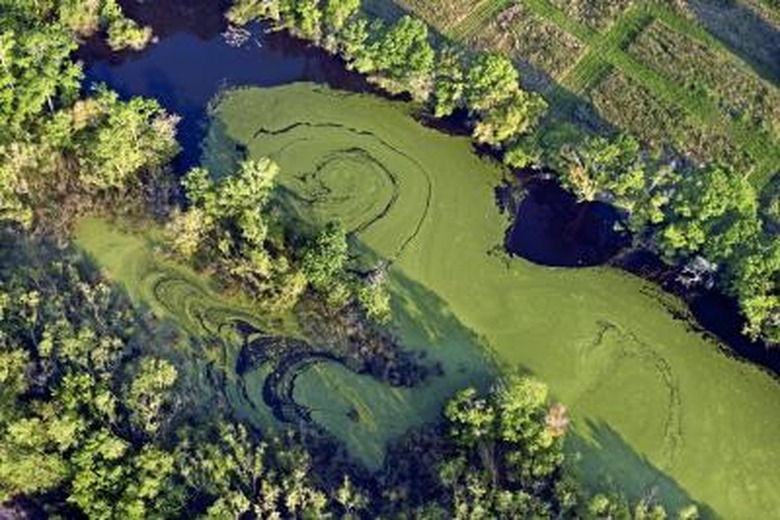Characteristics Of Protozoa & Algae
Protozoa and algae are large divisions of protists, which are a major component of plankton. Protozoa have an animal-like behavior whereas algae are considered plant-like. All protists have a true nucleus and require some form of moisture to survive. Although they share some characteristics, protozoa and algae are not closely related.
Characteristics of Algae
Characteristics of Algae
Algae are classified in the Kingdom Protista, which has a variety of unicellular, multicellular and colonial organisms. Algae are eukaryotic organisms, meaning they have complex structures inside the cell membrane. A eukaryotic cell's most important organ is the nucleus, which houses the cell's genetic information and differentiates it from prokaryotic cells. Algae require a moist environment and can live in salt or fresh water, soil and on the surface of rocks. These tiny plants lack typical roots, leaves and stems; however, they have chloroplast organs, which are membrane-bound and create energy to power the cell through photosynthesis and an electron chain known as the Calvin cycle.
Types of Algae
Types of Algae
There are an overwhelming variety of algae, with the current number of documented alga species at 127,203 as of March 2011, according to AlgaeBase. The term "algae" covers a wide range of distantly related organisms. The scientific community has eased species identification by creating seven different groups that categorize species with similar chemical processes, color, anatomy and behavior. Yellow-green algae are colonial species that grow in freshwater, and brown algae are commonly known as seaweed. Unicellular varieties are euglenoids, golden-brown algae and fire algae. The green and red types of algae both range in size from microscopic to macroscopic.
Characteristics of Protozoa
Characteristics of Protozoa
The term "protozoa" was popular in the 20th century but has now become obsolete. The group includes members of the Kingdom Protista that do not have chloroplasts and therefore have no color. All protozoa were thought to be eukaryotic and unicellular. It is now known that the organisms classified as protozoa are not closely related. Although the term does not meet all current classification needs, it is still used for describing the general characteristics of a very diverse group. Protozoa can reproduce both sexually and asexually, are eukaryotic and either ingest or absorb their nutrients from the surrounding environment.
Types of Protozoa
Types of Protozoa
Protozoa are divided into four phyla: Sarcodina, Mastigophora, Ciliophora and Sporozoa. The phylum Sarcodina includes amebae and related organisms. Unicellular and motile, they gather food by surrounding it with the cell membrane through the use of arm-like pseudopods. Ciliophora are motile through the use of hair-like projections of the cell membrane called cilia, while those from Mastigophora use flagella for motility. Though most are free-living organisms, there are also many parasitic protozoa. Parasites can infect an organism through contact with hosts, soil or water, and many can be deadly to humans. Parasitic protozoa range in size from microscopic to 16mm in length.
Cite This Article
MLA
Land, Mitchell. "Characteristics Of Protozoa & Algae" sciencing.com, https://www.sciencing.com/characteristics-protozoa-algae-8124201/. 24 April 2017.
APA
Land, Mitchell. (2017, April 24). Characteristics Of Protozoa & Algae. sciencing.com. Retrieved from https://www.sciencing.com/characteristics-protozoa-algae-8124201/
Chicago
Land, Mitchell. Characteristics Of Protozoa & Algae last modified August 30, 2022. https://www.sciencing.com/characteristics-protozoa-algae-8124201/
